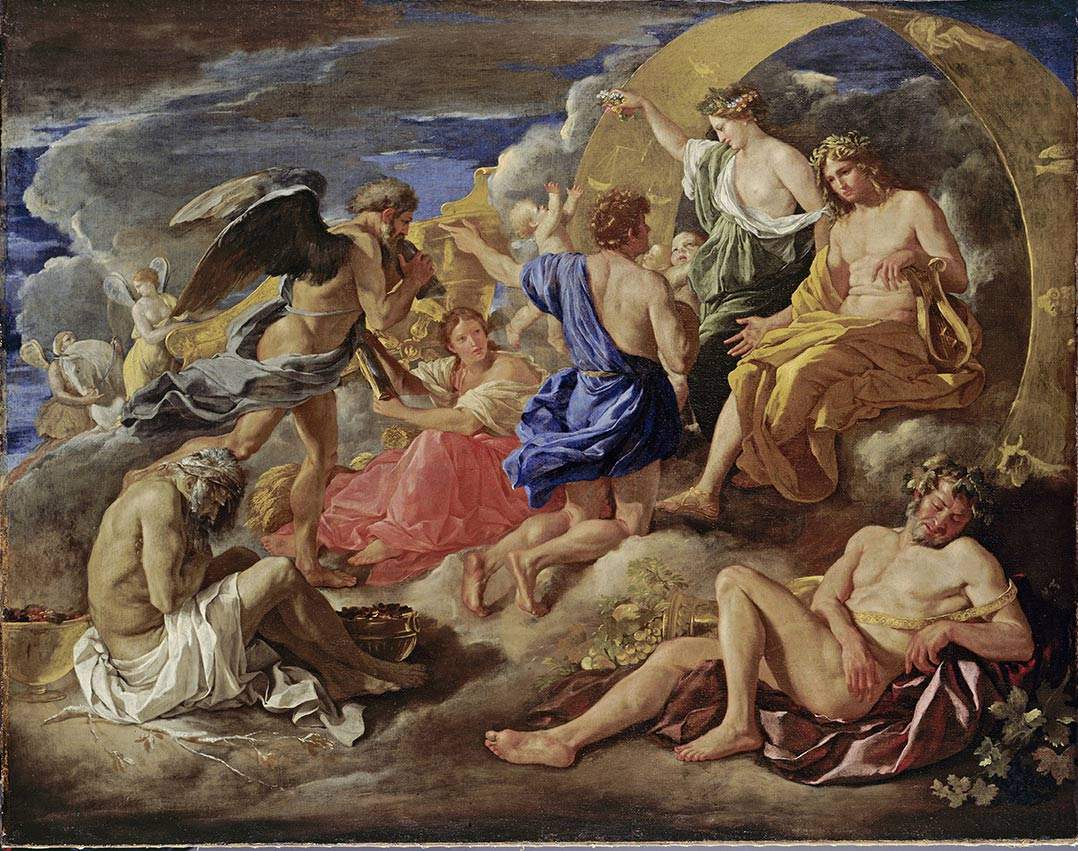Time in Baroque art is on display at Rome's Palazzo Barberini
In Rome, from May 15 to October 3, 2021, the Gallerie Nazionali di Arte Antica presents the exhibition Tempo Barocco, curated by Francesca Cappelletti and Flaminia Gennari Santori, at the Palazzo Barberini venue. The exhibition, which inaugurates the Galleries’ new exhibition space on the ground floor of the museum (eight rooms for a total of 750 square meters completely restored and renovated) explores the concept of "baroque," or a unified system of the arts that saw the light of day in Rome in the first decades of the 17th century and found in the spectacular vault with Pietro da Cortona ’s Triumph of Divine Providence at Palazzo Barberini the synthesis of all the founding aspects of its aesthetics: theatricality, magniloquence, wonder, and the free and inventive reworking in a grandiose and pathetic key of classical myth and ancient works of art.
Baroque art is characterized by the continuous search for the most effective rendering of movement in the depiction of gestures and actions. The painting of mythological scenes as well as that of history are transformed into theatrical representations, rich in pathos and emotion; themes derived from the coeval debate around emotions, expressions, and their effects on the viewer are reworked in the composition of the scene. The guiding thread and center of the exhibition project is the concept of Time, investigated in all its forms and declinations (love, the seasons, beauty, action), through masterpieces by Italian and foreign artists, most of whom lived in Rome during the seventeenth century, from Italian and international museums and punctuated by the sumptuous and refined clocks produced at the time.
On display are 40 works by the great protagonists of Baroque culture: from Pietro da Cortona to Gian Lorenzo Bernini, from Valentin de Boulogne to Nicolas Poussin, from Anton Van Dyck to Domenichino, from Andrea Sacchi to Guido Reni, to name but a few. Many, and important, museums have lent the works, including the Uffizi in Florence, the Capodimonte Museum in Naples, the Prado Museum in Madrid, the Musée Jacquemart-André in Paris, the Rijksmuseum in Amsterdam, the Kunsthistorisches Museum in Vienna, the Staatliche Museen in Berlin, and the National Gallery in London. Time, which in allegorical form and in the reflections of writers had appeared in the sixteenth-century artistic tradition, becomes, with its passage and with the intense production of still lifes, the protagonist of the works. Even the sumptuous clocks of the period, sometimes designed by great artists are adorned with personifications of Time, associated with those who benefit from it, or its antagonists: Truth, Beauty, Love, Death.
"The Tempo Barocco project,“ explains Flaminia Gennari Santori, ”was born from an idea that Francesca Cappelletti shared with me in 2017 and that she has developed over the years. Building together this exhibition with which we inaugurate the new space for temporary exhibitions was really exciting. Now that Francesca is directing the Galleria Borghese, this exhibition also becomes a magnificent opportunity to initiate a fruitful relationship and comparison between two museums that with their heritage are certainly among the most relevant in the narrative of an era and its art, in the national and international context."
The exhibition is divided into five sections: The Myth of Time; Time and Love; Time between Calculus and Allegory ; Tempo Vanitas; Stopping Time, Seizing Action. The first three sections offer a view of the depiction of Time as a mythical figure. The theme is represented not only as the winged and stern old man assimilated to Saturn of the classical and Renaissance tradition, but also through metaphors derived from ancient poetry: The Ages of Man; the relations of Cronus (god of Time) with the antagonist Cupid (god of Love); the personifications of the Hours and Seasons, metaphors of calculable time; and those of Beauty, Truth, Hope, Occasion and Eternity. Paintings, frescoes, mirrors and clocks that featured these kinds of decorations had the role of marking time in the palace and family life, evoking its most significant moments. The fourth section is dedicated to another theme related to the passage of time, that of Vanitas, where still life is the protagonist. Skulls, hourglasses, clocks, bruised fruit, and withered flowers remind people of the precariousness of beauty and the fragility of human life. The last section is devoted to the aspects of theatricality and wonder, the protagonists of many works created by artists working in Rome during the seventeenth century, who chose to depict their subjects at the climax of the action, highlighting its drama.
The exhibition is accompanied by an illustrated catalog, published by Officina Libraria, with an introductory text by the curators, essays by Francesca Cappelletti, Emilio Russo, Antonio Iommelli and Laura Valterio, and fact sheets of the works on display. For information you can visit the Barberini Corsini National Galleries website.
Image: Nicolas Poussin, Helios and Phaeton with Saturn and the Four Seasons (1635; oil on canvas, 122 x 153 cm; Berlin, Staatliche Museen zu Berlin). Photo by Jörg P. Anders. Berlin, Gemaeldegalerie - Staatliche Museen zu Berlin. © 2021. Photo Scala, Florence/bpk, Bildagentur fuer Kunst, Kultur und Geschichte, Berlin.
 |
| Time in Baroque art is on display at Rome's Palazzo Barberini |
Warning: the translation into English of the original Italian article was created using automatic tools. We undertake to review all articles, but we do not guarantee the total absence of inaccuracies in the translation due to the program. You can find the original by clicking on the ITA button. If you find any mistake,please contact us.





























